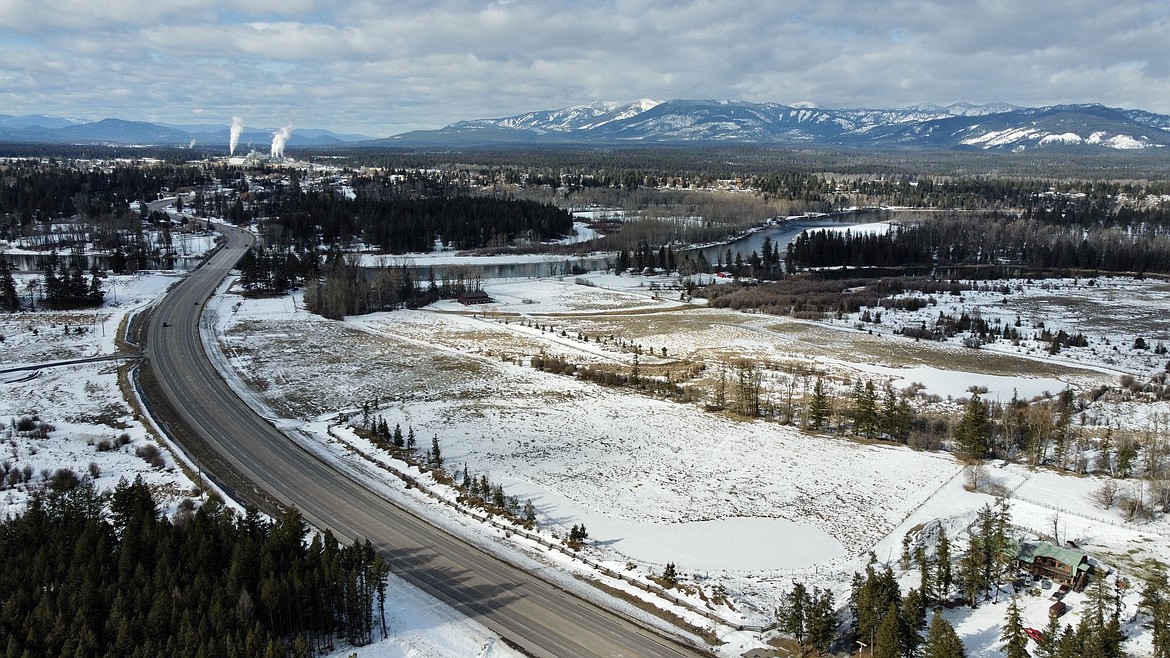Opinions differ, but folks cordial at growth workshop
Columbia Falls has filled up. Where and how it will grow in the future — and still be a place where a blue collar worker can have a home and raise a family — remains a concern among many residents.
Inside the city limits, the number of available lots has largely evaporated, Mayor Don Barnhart and city staff noted during a growth workshop Monday night.
So far this year there have been just a handful of building permits, as subdivision have been completed over the years and the number of lots in the city has dwindled.
The growth has been outside the city limits — subdivisions like Garnier Heights off Meadow Lake Boulevard, Tamarack Meadows at Meadow Lake Resort — those were the latest.
East of the River has seen some massive projects proposed, but the Columbia Falls City-County planning board has rejected them, citing traffic, wildlife, density and other concerns.
The state Legislature could very well have a say in how the city grows into the future. Senate Bill 382 would overhaul how municipalities do future planning. The bill calls for front loading all the planning and other reviews in an initial growth policy down to the minute details. It also front loads the public comments. Developers in turn, would then know what projects would pass muster ahead of time.
Another bill in the legislature would simply require that any land that is served by city sewer and water could not be required to have a minimum lot size greater than 2,500 feet.
In other words, more than a few folks in town could start putting homes in their backyards if they saw fit, and neighbors, and the city, would have little say in it.
That bill is co-sponsored by House District 3 Rep. Braxton Mitchell.
City manager Susan Nicosia told the crowd that while the perception is the city has a lot of leeway in its planning decisions, 90% of it is already dictated by state law.
City Councilman Mike Shepard surmised that Columbia Falls problem is simply one of supply and demand.
“I don’t see demand going anywhere but up,” he said.
But resident Mike Burr, a former executive at Whitefish Credit Union, noted that housing is a finite resource with labor, land and materials costs. Prime real estate — say river frontage — is always going to have more value.
He also noted that about 14 years ago, the entire market fell off a cliff.
That’s what it may take to reset the housing market here.
“I don’t know how it gets back (to lower levels) unless we have a recession,” he said.
Other claimed developers were pushing up values.
“In my observation, it appears developers are driving the housing plans,” Shirley Folkwein said.
Resident Marissa Getts, who has expertise in planning, urged folks not to blame out-of-staters, noting that many of them are providing critical services. She noted a doctor, who was originally from out of state, gave a family member critical care during an illness.
Mayre Flowers, of Citizens for a Better Flathead, suggested the city embark on a formal housing study The council considered funding one last year, but in the end, decided against it.
She also claimed the city should look at the best ways to utilize its resources like sewer and water — growing west rather than east, because it should be less expensive to extend service lines on dry ground rather than drilling under the river.
But west of the city is farmland as well, and to date, no one has broached the subject of converting it to housing.
Meanwhile rental housing continues to rise in Columbia Falls. The Highline Apartments in Columbia Falls recently changed ownership, people said. And leases were raised. speaking to one renter, the Hungry Horse learned that the individual’s current lease is about $780 for a studio. But the complex’s website now lists studios for more than $1,045.
Folks said they knew people who were already leaving — they could no longer afford to live there.
It’s not that people area against high density housing noted resident and businesswoman Jacque Demongin, it's the location of the development, namely near the Flathead River.
“I think many of us are concerned about the location of the building,” she said.
The one thing that recent development proposals has done is spark public interest. When the last growth policy was written, virtually no one from the public attended the meetings. This time around, the council chambers had a robust crowd, with a lot of ideas. It was a cordial meeting as well.
The city plans on working on updating its growth policy in 2024.
“We’re all in this together,” noted former Mayor Gary Hall.


